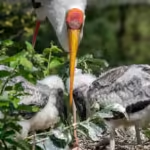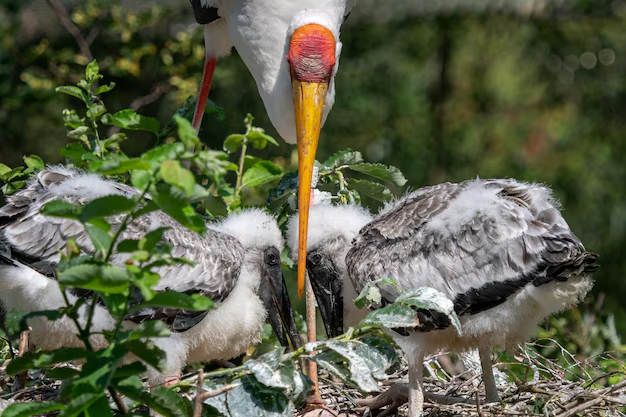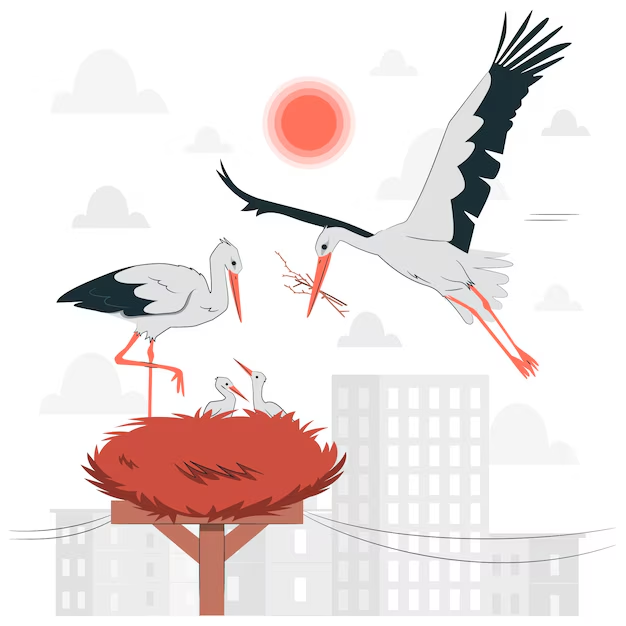In the intricate web of nature, different species often interact in various ways. One such fascinating interaction is commensalism, a type of symbiotic relationship where one species benefits and the other is neither helped nor harmed. The relationship between bees and marabou storks is a prime example of this, showcasing how animals can share a habitat and resources in ways that do not disrupt the balance of their lives. In this article, we will delve into how bees and marabou storks coexist through commensalism, the benefits each species receives, and how this relationship illustrates the complexity of nature’s partnerships.
Table of Contents
Toggle1. Understanding Commensalism
1.1 What is Commensalism?
Commensalism is a type of relationship between two species where one benefits and the other is not significantly affected—neither positively nor negatively. In contrast to mutualism, where both species benefit, or parasitism, where one species harms the other, commensalism allows for a balanced interaction. Commensal relationships are common in nature and occur across various ecosystems, from forests to grasslands.
2. Bees and Marabou Storks: A Brief Overview
2.1 The Bee’s Role in Nature
Bees are essential pollinators, vital for the reproduction of many plants and crops. They collect nectar and pollen from flowers, transferring pollen between them and facilitating plant reproduction. While doing so, bees provide an essential service to the ecosystem by supporting biodiversity and agricultural productivity. They are often found in various habitats, from forests and meadows to urban areas.
2.2 The Marabou Stork: A Scavenger of the Skies
The marabou stork is a large, scavenging bird found in parts of Africa and Asia. Known for its towering height, long beak, and distinctive bald head, the marabou stork thrives in environments where it can scavenge for food, including wetlands, garbage dumps, and areas with abundant food waste. It feeds on a wide range of materials, including dead animals, plant matter, and even human waste, making it an opportunistic eater.
3. The Commensal Relationship Between Bees and Marabou Storks
3.1 How Bees Benefit the Marabou Stork
Bees play a subtle yet important role in the life of the marabou stork. As bees forage for nectar from flowers, they often disturb insects or small prey hiding nearby. These disturbances can flush out hidden food sources, such as insects, rodents, or other small creatures, which the marabou stork can easily take advantage of. In this way, bees indirectly assist the marabou stork in finding food, providing a steady supply of resources for the stork.
3.2 The Marabou Stork’s Indirect Impact on Bees
On the other hand, the relationship does not appear to have any negative impact on the bees. Since the marabou stork is a scavenger and feeds on dead animals, food waste, or discarded scraps, it does not directly interact with the bees in a way that would harm them. The presence of the stork could provide a cleaner environment by scavenging decaying matter, potentially reducing competition for resources that might attract pests or predators that could harm the bees.
4. Examples of Commensalism in Nature
4.1 Other Examples of Commensalism in the Animal Kingdom
The relationship between bees and marabou storks is just one example of commensalism in nature. Other examples include:
- Cattle egrets and cattle: Cattle egrets often follow cattle and other large herbivores, eating insects and small animals that are disturbed as the cattle graze.
- Remora fish and sharks: Remora fish attach themselves to larger marine animals, like sharks, and feed on the leftover scraps from the shark’s meals.
- Birds and hippos: Smaller bird species often sit on the back of hippos, picking off insects or parasites from the hippo’s skin.
Each of these examples shows how species can share resources or habitats without direct harm to one another.
5. The Importance of Commensalism in Ecosystems
5.1 Maintaining Balance in Nature
Commensal relationships play an important role in maintaining ecological balance. They help species coexist and interact in ways that maximize the use of available resources. For example, bees benefit from pollination, while marabou storks can find food more easily without directly competing with other scavengers. The presence of such relationships highlights the complexity of ecosystems and the interconnectedness of species, even when one species does not directly benefit from the other.
5.2 Promoting Biodiversity
By fostering coexistence, commensal relationships like the one between bees and marabou storks contribute to biodiversity. When species do not compete for the same resources and instead coexist peacefully, it promotes healthier and more diverse ecosystems. These relationships also ensure that species can adapt and thrive in changing environments, as they often rely on a variety of other species for survival.
6. Conclusion: The Subtle Power of Commensalism
The relationship between bees and marabou storks serves as a reminder of the intricate balance that exists within nature. Through commensalism, both species can benefit from each other’s actions without causing harm. Bees help flush out food sources for the stork, while the stork indirectly supports the bees by keeping their environment cleaner. This subtle yet significant interaction demonstrates how different species can rely on one another to navigate the challenges of their environment, all while maintaining a delicate balance that allows each to flourish.











